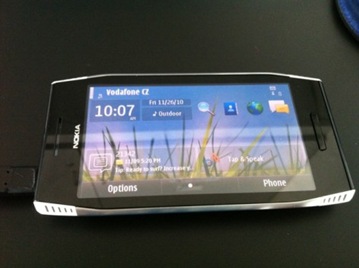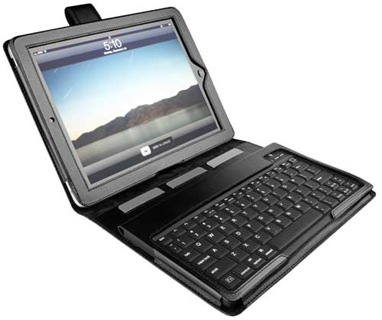At the end of the Asus press conference at Computex 2011, Chairman Jonney Shih waited until the very last minute to unveil the best product of the night: The Asus PadFone, a convergent device that docks a smartphone into the back of a slate so that they can be used together as a single device. Problem is, the entire demonstration was based on a few concept videos and a prototype that was clearly unfinished. Still, it's a usage model that we were really excited about when the Motorola Atrix made its debut and an incredibly neat approach to mobile computing—if and when Asus decides to make it available to the public.
The PadFone is essentially a symbiotic relationship between smartphone and slate, whereas the Atrix's screen and keyboard dock are intended to replace your netbook or laptop. It's a concept that owners of both Apple iPhone and iPad wish were possible: To dock the former into the latter and quit having to use two separate devices.
From the demonstration, the PadFone is inserted into the back of the dock like a cassette tape, hidden by a panel that fits flush with the back of the tablet. With the Atrix, the Smartphone sits several inches behind the screen, which simply isn't as clean-looking.
If the PadFone is anything like the Atrix, the tablet portion won't have a processor, memory, or local storage; it'll be a shell so that the two can share things like data, webcam, and 3G internet access. What makes the PadFone fundamentally different than the Atrix, however, is that it also shares the same operating system (The Atrix, when docked, runs on an alternative Linux OS). According to Asus, it's not doing any kind of upscaling or upconversion; it's using its own technology to adjust the smartphone screen layout. If you ask me, it almost sounds like it's using an internal HDMI connector.
Here's what we know for sure: The Smartphone will have the latest version of Android at the time of launch, which means so will the tablet dock. The screen size of the tablet is 10.1-inches, while the Smartphone has a 4.3-inch one. The tablet dock also has a built-in battery that will extend the life of the one in the Smartphone.
The usage scenarios are evident with such a solution: Say you're surfing the Web on the smartphone and find that the screen is too small for certain websites. You can stop what you're doing, dock the phone, and pick up where you left on the tablet. This also applies to composing email, video conferencing, and playing media. Right now, the details are so limited that it sounds like this game-changing device is still a while away. But if it does come to fruition, it could be the future of tablet computing.





































